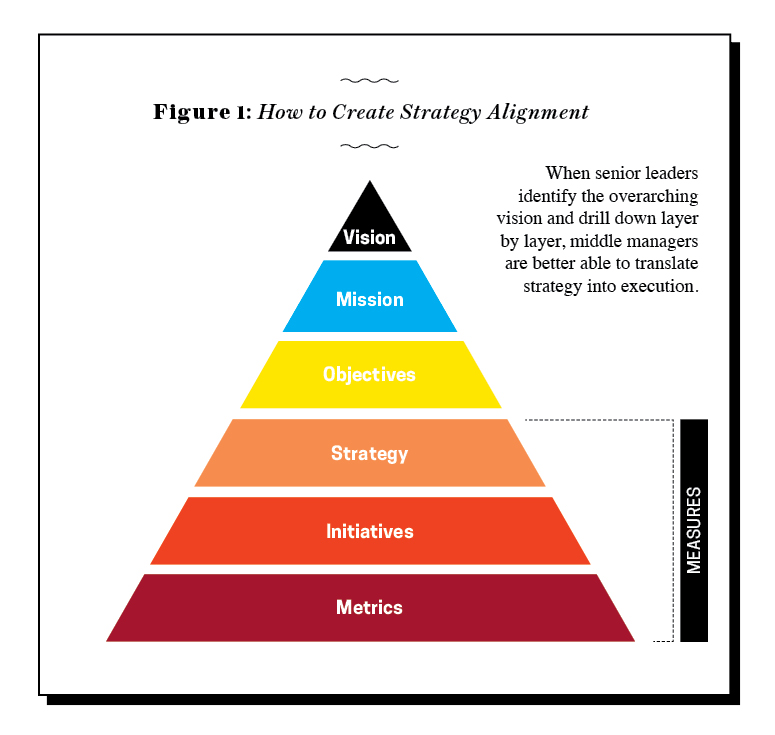Employee attitudes have a major impact on retention rates. But are you focusing enough on the organizational procedures that shape those attitudes? Make these moves and reverse your attrition trends.
By Leah Wolfeld
Turnover doesn’t come cheap. When an employee leaves an organization, the company incurs direct costs through vacation payouts, severance pay, recruitment of prospects, and a painstaking selection process.
The indirect costs are also significant: tacit knowledge and productivity loss, opportunity costs of employees covering a now-vacant position, and overall lower levels of staff engagement. HR professionals also burn numerous hours transitioning out those who leave and gradually on-boarding new hires.
Sign up for the monthly TalentQ Newsletter, an essential roundup of news and insights that will help you make critical talent decisions.
In most industries, employee turnover costs about 150 percent of the outgoing employee’s salary. But the big problem with turnover goes beyond the money. More importantly, retaining your organization’s top talent is critical—especially during booming economic times featuring low unemployment rates that favor employees.
There’s considerable research on employee turnover and retention that highlights attitudinal elements of the job, such as perceived supervisor support, motivation, organizational commitment, and engagement.
Research from Gallup, for example, shows that employees who are “engaged and thriving” are 59 percent less likely to pursue a new job within the next year, while a report from Udemy finds nearly half of employees have jumped ship to another organization because they couldn’t deal with their bad boss anymore.
Accordingly, many managers and leaders seek to influence these factors by providing constructive feedback, introducing perks and incentives, and managing their team resources effectively.
However, while these interpersonal behaviors matter, it’s often organizational process that matters more to assure such behaviors flourish. Yet these crucial processes are usually overlooked by HR professionals on the pathway to enhancing engagement, boosting retention, and avoiding the financial and morale costs that arise when employees decide to vote with their feet.
What Is Organizational Process?
Organizational process refers to the sequential steps used for program de-sign and implementation that facilitate repetition that, in turn, helps maintain a standard or quality. In organizations, processes range from HR tasks (hiring and promotion decisions), to a product design and innovation, or even the accepted way to schedule meetings.
In short, organizational processes are the norms, values, and actions that are generally understood by everyone and determine how things get done.
In our consulting engagements, we leverage a diagnostic survey that measures the current state of the organization, cutting across levels, departments, and various teams.
Specifically, we measure perceptions of processes including the relevance of the overarching organizational strategy to the individual, and the consistency and clarity of work and decision-making.
To identify the solution that best fits the client’s problem set, we also measure the interpersonal factors, such as the extent to which employees feel trust in the organization, their level of felt empowerment, the depth of the emotional connection they have with the organization, and how aligned they feel their work goals are with the organization’s.
In analyzing over five years of data across all industries, we’ve found some noteworthy macro-level trends that highlight the importance of organizational processes to employee retention. Employee perceptions of justice, fairness, and trust in the organization correlate highly with retention.
If employees feel their voices are heard, see that they’re treated equitably, and understand the reasoning behind decisions, they’re more likely to feel like the organization supports and values them and therefore are more likely to stay.
Conversely, it’s the workers who feel ignored, cheated, or left in the dark that trust the organization less and are more likely to leave. Consistently, we’ve found that the more removed respondents are from the c-suite, the more they tend to distrust the “system.”
Generally speaking, as the distance from the c-suite increases, so does the lack of clarity regarding why resources are distributed in a certain way, and why performance is evaluated as it is.
These effects are predictable and intuitive, and yet they’re often unaddressed as talent factors that could enhance retention. Here are some of the ways to do just that.
1. Communicate a Clear Process
The virtue of generally understood processes is that they provide clarity around “how things are done,” with the corresponding transparency enhancing employee trust in the objectives and motivations of senior leaders.
Without clarity surrounding expectations, employees quickly draw their own conclusions based on observation.
Consider promotions as an example. Imagine three entry-level employees on three different teams, and two are promoted. These two employees also happen to have excellent rapport with their managers.
Without knowledge surrounding how performance impacts promotion, the third employee may assume that the relationship with the manager contributed significantly to the promotion; these assumptions of unfairness breed distrust in the institution even if the promotions were in fact performance-based.
Introducing a process surrounding resource allocation can provide similar clarity and promote trust. For example, most organizations struggle with distributing the appropriate resources between the company’s core product teams and their innovation teams.
In our work, we frequently have found that teams who make, market, or sell the bread and butter products and services of an organization feel that available resources are disproportionately allocated toward innovation.
This tension between teams, though unlikely to disappear, can be partially alleviated by demystifying the process and criteria that senior leaders use to determine resource allocation.
The company can describe how they decide whether or not a product is worth investing in, and how this investment supports the organization’s short- and long-term objectives.
In this way, procedural justice research demonstrates that more transparent organizations engender more trust. However, legal barriers often prevent full transparency and, practically speaking, senior leaders often have good reasons to avoid it.
To compensate, organizations can keep processes consistent in their implementation, make them simple and clear, and communicate the processes effectively. In doing so, employees better understand the processes that impact them and are more likely to trust those processes, and therefore the organization.
2. Make the Process Simple and Consistent
Maintaining a consistency of implementation across all the impacted units or levels also bolsters perceptions of fairness and trust.
Take, for example, performance ratings. Some appraisal tools are vague and definitions of a “good performer” are left up for interpretation. In these cases, a manager may rate the same employee’s performance on the job differently than another manager, simply because the tool they’re using leaves room for interpretation. This renders the performance appraisal process inconsistent across raters.
To enhance consistency across raters, organizations can train them for a common frame of reference and supplement the tool with more specific criteria. When you maintain these standards across the board, your employees are more likely to see the process as fair.
Processes are also most effective when they’re simple and easily repeatable. Some teams create elaborate processes that account for many potential variables and consist of more than 100 steps.
Sometimes, in an attempt to solve a problem, processes are expanded even further. However, in pursuit of excellence and controlling implementation, these detailed processes end up backfiring.
Their intricacy renders them inaccessible to the rest of the organization and breeds suspicion and distrust. When the team that designed the process is the only one that truly understands it, others impacted by the process rarely see it as taking their needs into account.
And even when a detailed process may be necessary, the requisite communication surrounding this necessity fails. For example, some product development teams spend significant time and resources developing extensive stage gate processes that require tremendous criteria at each stage and vast amounts of data to be distilled by experts.
This level of detail, while laudable and critical for quality standards, can be perceived as overly complicated if not explained properly.

3. Attend to Middle Management with Strategy Alignment
While all levels benefit from clear, simple, and consistent processes, our research reveals that certain processes are more critical for middle managers than other levels. Scores on questions regarding how actionable the company’s strategies are, the predictability of work rhythm and its impact on how time is spent, and prioritizing short- and long-term objectives, are consistently lower for middle managers than senior leaders or lower-level employees.
This pattern reflects the well-documented difficulty of translating strategy to execution that middle managers grapple with, as senior leaders strategize and lower-level employees focus on execution.
Thus, what middle managers often need more than anything else is “strategy alignment,” as they’re the crux to translating strategy to execution. Strategy alignment requires senior leaders to identify the overarching organizational vision and drill down by layer of actionability (mission, objectives, then strategy) to reach specific action-oriented initiatives and metrics.
This allows middle managers to create their own cascading alignment that overlaps with the organization’s as defined by their department (see Figure 1).
Going through the strategy alignment process—as well as the alignment implementation itself—opens up middle managers to trusting the organization in three major ways.
First, the alignment process identifies and prioritizes short- and long-term goals, a tension that middle managers consistently face. Their teams can then better tie their day-to-day actions to the initiatives put forth by senior leaders.
Second, by having input in the alignment session at their level (i.e., the cascading alignment), managers are more likely to buy in and feel like their voices are being heard.
Last, seeing the process take place impacts how fairly they perceive the allocation of resources to be. In other words, when senior leaders clarify how resources are allocated based on the decided organizational strategy, middle managers are more likely to feel like this distribution is fair.
In sum, our experience suggests that while there’s considerable attention on the links between retention and employee attitudes (such as engagement), there’s less attention devoted to the concrete organizational processes that impact such attitudes.
Dedicating resources to improving the processes not only enhances business performance, but also drives employee attitudes in a direction that makes them less likely to leave. To recap, here’s the short list of what organizations can do, in order to:
• Identify the purpose. While processes are critical for retention, retention in and of itself doesn’t justify implementing a process. What strategic objective in your company would benefit from a process? What would it look like, what would the impact be, and who would do the work? When mapping stakeholders, be sure to assess how the drivers and supporters of the process would receive the support they need.
When mapping stakeholders, be sure to assess how the drivers and supporters of the process would receive the support they need.
• Start a process for employee feedback. Employees need an avenue to voice concerns, offer ideas, and ask questions, especially during changes like implementing a new process. When employees feel like they’re heard, they feel more engaged and more committed to the organization.
They also need to know what decisions are made and why, even after employee input has been considered. The more information you have on the success of your process implementation, the more easily it can be adjusted and impact retention.
• Be selective and simple about process. Depending on the process, the organization could waste valuable resources on investing in processes that aren’t worth the squeeze. While structure provides clarity and guidance, too much structure can create too much rigidity and restrict employee empowerment and opportunities for innovation.
Leah Wolfeld is the director for organizational development at the McChrystal Group Leadership Institute, where she supports the development of research-based leadership tools and specializes in conducting and applying organizational research to complex environments.


